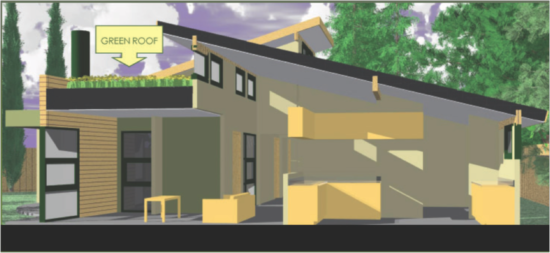
In a previous article, “Sripadanna Residence: Synergy in Sustainability Part I,” we discussed the relationship of synergies generated by a combination of design measures such as:
- building orientation to take advantage of the sun’s path;
- predominant shed roof and high ceilings with exposed framing made of reclaimed wood;
- clerestory windows that bring sunlight and warmth deep into the building;
- critically placed, highly energy efficient windows with shade protection on the south side;
- green living roof;
- tight building envelope that reduces air infiltration;
- highly energy efficient building insulation system;
- highly energy efficient radiant heating; and
- energy efficient appliances.
We illustrated how each of these measures allowed the possibility of the others and increased their efficiency when used in combination with the other, thus increasing the value for the building occupant. We also focused on how these measures increased the energy efficiency of the building by reducing the heating bill for the home.
Now let us explore how these same measures help the home stay cool in summer, provide fresh air to the occupants, and reduce the need for artificial lighting.
A significant factor to consider for passive ventilation system is to analyze local climate conditions. The days during the year that need to be cooled or heated are (measured in heating and cooling degree-days) relatively few in the San Francisco Bay Area. Even on those hot summer days, it always cools down by evening. In addition, natural ventilation can play an important role as we can tolerate higher interior temperatures when there is air movement with less humidity. The Bay Area’s dry weather is ideal for natural ventilation.
So for this scenario, the key is to design:
- a thermally efficient building envelope (proper orientation of the building mass combined with thermally efficient insulation, windows, cool roof, living roof etc.) that can sustain a constant comfortable temperature as long as possible while it is hot outside, and
- a building envelope that also allows itself to be open to the outside (through operable windows, patio doors, clerestory windows etc.) to cool down once the cooler temperatures return in the evening.
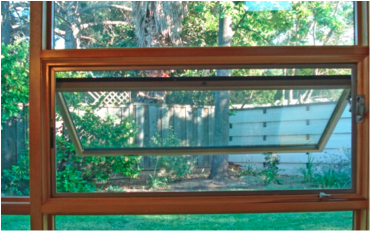
Thus, an efficient building envelope that resists heat gain in the first place, then opens itself to the outside (when desired), and allows natural ventilation, can lead to a very efficient passive cooling design.
With the Sripadanna Residence, this concept has been integrated into the design by creating operable windows at the lower level and clerestory windows at a higher level throughout the house to enable constant air flow for most days during the year.
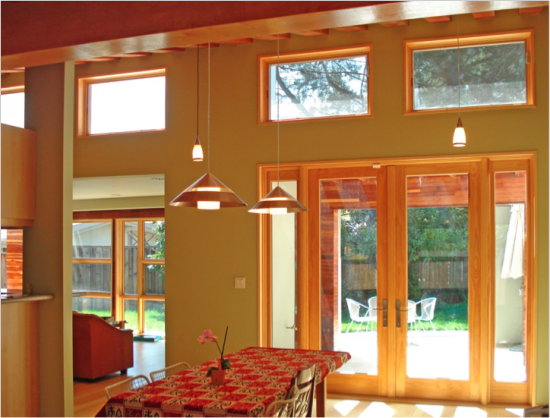
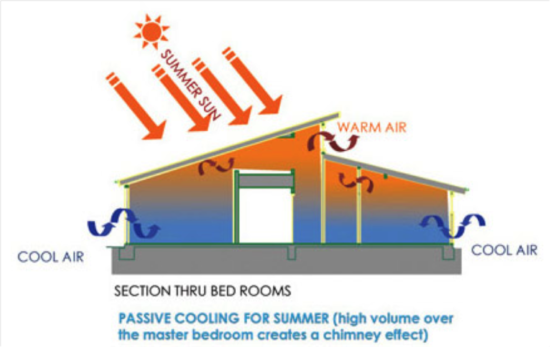
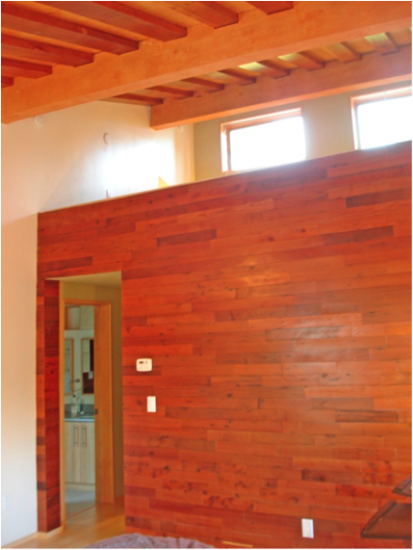
To facilitate cooling in the evenings on hot summer days, the house is equipped with large double doors in the dining room that open to the south patio. This creates a large opening in the house from which the accumulated heat is allowed to escape. In addition, the high volume space over the master bedroom (a contiguous open space open to most of the rooms) creates a stack effect which then allows for air circulation even when there is no air movement outside. This stack effect is created by the solar heat gain over the high volume area. As the warm air raises and exits through the north facing clerestory operable windows, cool air enters through the lower level operable windows. Hence, there is air movement in the house throughout the day, providing greater thermal comfort even when the temperatures are above 75F temperature. Even when the exterior temperature exceeds 105F, the interior temperature remains below 80F.
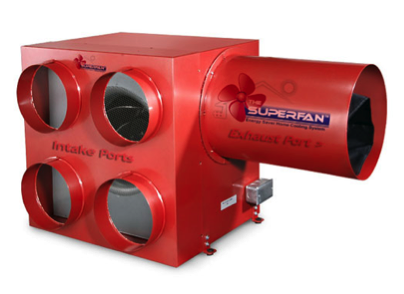
Also, a whole house fan is located in the high volume space to rapidly cool the house (night flush) for a comfortable sleep in the night time even on extremely hot days. As the whole house fan creates negative pressure in the house when it is turned on, one can direct the fresh air coming into the rooms by opening only those specific operable windows (located next to the beds in any of the bedrooms) for comfortable sleep in the night time without using artificial air-conditioning.
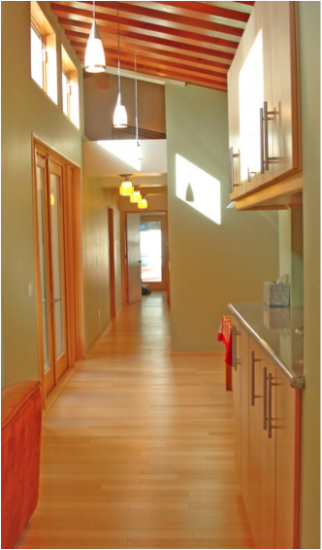
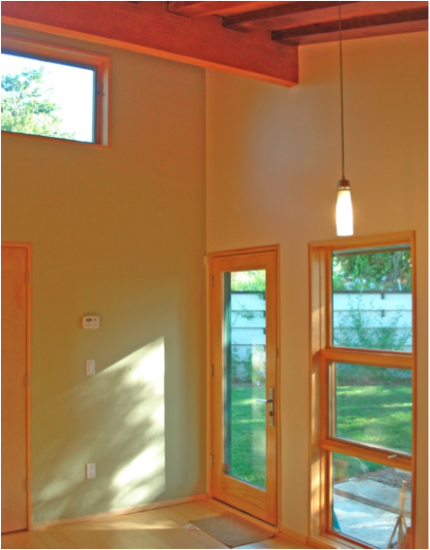
Therefore, with correct orientation, clever configuration of interior spaces, strategic placement of the windows, and a thermally efficient building envelope, one can take advantage of the local climate and the synergies created within. One can use natural lighting for a longer period during the day, breathe fresher air, and reduce indoor air contamination.
In summary, through creative design, the same spatial configuration can address many different aspects of building energy and resource efficiencies. Creating these synergies is the key to sustainable design that provides more value without significantly increasing the costs to the owner.


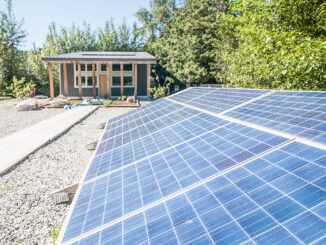
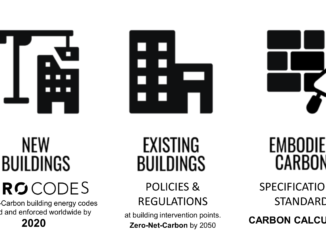

Be the first to comment